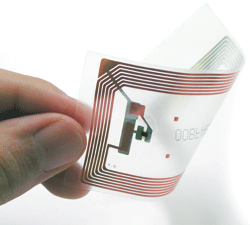Coating, Not Printing
- Published: June 01, 2011, By By Mark Miller Contributing Editor
Whether you work in the battery industry, the packaging industry, or the publishing industry, you have come across these two words: coating and printing. For as different as they are, it is easy to confuse the technologies and the capabilities.
Both processes provide an operator the ability to coat a thin film of fluid onto a substrate, but there are some fundamental differences in capability. Namely, the shapes that are possible.
Printing technology provides the operator with the ability to produce any shape a computer can form on a screen and translate through a print head. The images/pictures on a printed page are a good example. They can vary in size and shape and are printed dot by dot.
Coating, on the other hand, allows you to place a fluid in any shape you want — as long as it is rectangular! A good way to distinguish coating and printing is to imagine that printing is discrete and coating is continuous (mostly).
Of course, this rule of thumb has many exceptions, but discrete versus continuous is a good baseline to develop an understanding of the two technologies. The disadvantage of the shape limitation with coating for a coated/printed product is overcome with speed and continuous operation.
Coating technology includes fluid deposition through roller (gravure), slot die, and other continuous full-web applications. More broadly, other fluid coating techniques could be considered, but the confusion seems to lie in coating head technology and print head technology.
Examples of printing technology include inkjet and roller technology. The fine line occurs at the roller technology of printing and coating.
While I have already stated that coating is full web and continuous, techniques developed by operators and equipment suppliers alike have broadened the ability of coating heads to allow for intermittent coating and lanes of coating. This improvement on the capabilities of coating technology still is limited to the shape that can be properly displaced by a roll head or released from a slot die — a rectangle.

Why is this difference important to the world of printed and coated products? Let's take the RFID market. In developing a circuit that has a fluid to be placed on a substrate, an RFID system can require the fluid to move and snake around (Figure 1). This would be relatively easy with a print head but unusual for a coating head.
However, to produce a Li-Ion battery, the fluid needs to be placed in rectangular patterns to match the final construction of the battery. Utilizing a coating technique for the battery industry allows for increased production speeds and improved accuracy over a continuous web. In addition, utilizing a curtain coating technique via a slot die, coating more than one fluid at a time is possible with one coating head.
Both techniques have limitations based on the rheology of the fluid being dispersed. In many cases, the rheology dictates the method and not the other way around. This chemical dependence forces an engineer to be aware of a wide variety of techniques and capabilities to solve the process problem.
As you can see, printing and coating both have advantages and disadvantages. The key is matching the application correctly with the system best suited for the fluid placement. For some applications, a coating technique will provide the necessary tools to optimize a product, while other applications may require a printing technique to meet the functionality. Remember: Coating and Printing Matter!
Roll-to-roll coating industry expert Mark Miller, owner of Coating Tech Service, has 14+ years of slot die coating experience and troubleshooting. Contact him at 612-605-6019; mark@coatingtechservice.com; www.coatingtechservice.com.







